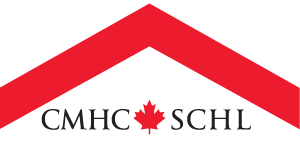To combat climate change, Canada and more than 120 countries committed in the Paris Agreement to net-zero greenhouse gas emissions by 2050. Single detached houses make up about 69% of residential energy use in Canada. Improving their energy performance i can play a key role in reducing emissions in the building sector. However, a one-size-fits-all approach may not work for all buildings and reduce the emissions as intended. This research project proposes comprehensive energy retrofit roadmaps to improved energy efficiency for a specific group of houses in Musqueam First Nation.
3 Key Goals
-
✔
Develop baseline energy models for 10 selected houses on Musqueam First Nation Reserve.
-
✔
Investigate various energy conservation measures for these houses and identify the most effective ones.
-
✔
Propose energy retrofit roadmaps based on the identified conservation measures that will allow Musqueam houses to achieve net-zero energy and greenhouse gas emissions by 2050.
Project scope and expected outcomes
A plan for energy-efficient homes in Musqueam First Nation
In Canada, an estimated 13% of greenhouse gas emissions comes from the building sector. Direct greenhouse gas emissions from buildings are mainly associated with energy consumption. Therefore, improving building energy performance can help achieve Canada’s energy goals as outlined in the Paris Agreement.
Making an existing building more energy efficient can be challenging. Energy performance can vary between buildings due to many factors. These include:
- geographic location
- mechanical, electrical and plumbing systems
- building energy sources
Energy-saving measures might include:
- improving building envelope thermal properties
- increasing envelope air tightness
- replacing existing systems with more energy-efficient ones
This 2-year research project aims to create effective energy retrofit plans. The goal is net-zero energy and greenhouse gas emissions for 10 houses in the Musqueam First Nation community. The houses represent the community’s diverse designs and ages. The research team will develop roadmaps for buildings with similar designs and energy performance.
During the first year, the research team will set up a data collection system to develop calibrated baseline models of the selected houses. In the second year, they’ll study how energy-saving measures affect these homes’ energy use. They’ll also include an economic feasibility analysis of the most promising energy conservation bundles.
Energy conservation measures can have wider uses
The research will determine the best energy conservation measures for the selected houses. The goal is to have energy retrofits for net-zero energy and emissions by 2050. The findings could support energy-efficient Indigenous homes throughout the West Coast. They could help create future energy guidelines for Musqueam First Nation’s single-detached homes. Housing policymakers and building designers may also gain a better understanding of which designs improve energy performance of existing single-family houses.
See more examples of projects funded through the National Housing Strategy Research and Planning Fund.
Program: National Housing Strategy Research and Planning Fund
Activity Stream: Program of Research
Title of the Research: A roadmap to net-zero ready homes in Musqueam First Nation
Lead Applicant: Musqueam Indian Band
Project Collaborators / Partners:
- British Columbia Institute of Technology
- BC Housing
Get More Information:
Contact CMHC at
RPF-FRP@cmhc-schl.gc.ca or
visit the
Research and Planning Fund webpage.
Search CMHC’s
Housing Knowledge Centre
for more information and updates about this research project.






 Share via Email
Share via Email
